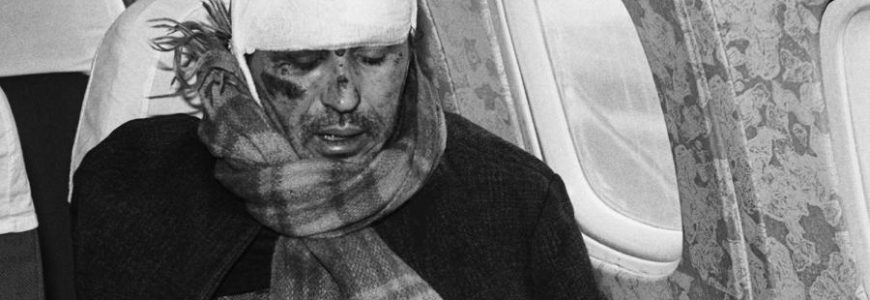In their essence and character, “Sumgayit” and “Baku” are links of one genocide. Baku took over the baton of the Armenian pogroms at the end of February 1988 near Sumgayit.
Throughout 1989, in response to the civilized demands of the Karabakh Armenians for the restoration of historical justice and their primordial rights, the Azerbaijani authorities consistently and grossly oppressed the Baku Armenians: they illegally fired them from their jobs, subjected them to threats and violence, and evicted them from their homes. There were also cases of murder. By January 1990, out of the 250,000 Armenian population in the capital of the AzSSR, only a few tens of thousands of Armenians remained – those who did not want or were not able to leave.
The situation escalated to the limit after a rally of the Popular Front of Azerbaijan (PFA) organized on January 11 in Baku, at which frank calls were made for the eviction of the remaining Armenians from Baku and a massive armed campaign against Karabakh. By January 13, the Armenian pogroms in Baku became widespread. After the rally held in the evening of this day on Lenin Square with slogans “Glory to the heroes of Sumgayit!”, “Long live Baku without Armenians!” The crowd of many thousands, divided into groups, under the leadership of the PFA activists, began methodically, house by house, to “cleanse” the city of Armenians. The pogromists were carefully prepared in advance, which, in particular, is evidenced by the fact that they have a detailed map of the city, divided into districts and quarters, with marked places of compact residence of the remaining Armenians in the city.
In broad daylight, crowds of beasts in human form attacked people on the streets, broke into houses, beaten, raped, killed, burned alive, dismembered with axes, mocked the corpses. Murders were committed with primitive tools – stakes, crowbars, axes. It would be difficult for a normal person at the end of the 20th century to imagine such an extreme sadism characteristic of wild tribes … if it were not for “Sumgayit” that preceded this.
According to the testimonies, in many cases, the pogromists acted according to a pre-designed scheme: first, a group of ten to twenty people burst into the apartment and started beating, after which a representative of the Popular Front appeared, as a rule, with already issued forged documents for the exchange or sale of the apartment . By threats and force, the owners of the apartments were forced to leave their homes and go to the port, from where they were actually sent into the unknown. At the same time, money and jewelry were taken from people.
Massacre in Baku lasted a whole week with the full connivance, or rather, the complicity of the local authorities and internal troops. Only on the night of January 20, units of the Soviet army were brought into the capital of the Azerbaijan SSR, which met with fierce resistance from the armed detachments of the PFA, which led to casualties on both sides.
As in Sumgayit, troops were sent to Baku only after the pogroms were over. Why the allied forces were again “late” – there is still no intelligible answer to this by no means rhetorical question.
In terms of the number of victims, duration and scale, the Armenian pogroms in Baku surpassed the massacre of Armenians in Sumgayit. According to various sources, about 400 people were killed. In addition to the dead, there were many missing Armenians – they were not found either in the lists of the dead, or among the survivors. Many died from wounds received during the Baku orgy already in Yerevan and other cities.
It should be noted that in those dark days, hatred was kindled against not only Armenians, but also other “gentiles” living in Baku – Russians, Jews, Greeks, Georgians, soldiers of the Soviet army. There are facts of violence and deportation also against representatives of these nationalities. The pogromists promised to expel the “Russian occupiers” from the city.
Although the pogroms of Armenians in Baku met with condemnation from various international organizations, nevertheless, they were not given an adequate legal assessment, despite the presence of a huge number facts, documents and evidence.
Thus, the Baku pogroms became a direct consequence of the Sumgayit massacre of Armenians, because there was no strict and substantive condemnation and punishment of the organizers and perpetrators of the Sumgayit genocide by the then Soviet authorities and the world community. And impunity led to new mass atrocities in Baku, Kirovabad and other cities and villages of Azerbaijan. The unbridled leadership of Azerbaijan, having undertaken an aggressive and disastrous war against the Nagorno-Karabakh Republic in 1991-1994, to this day continues the policy of genocide, unleashing, now together with Turkey, large-scale and local wars with equal impunity as against self-determined Artsakh and the sovereign Republic of Armenia.
Ashot Beglaryan, Stepanakert

